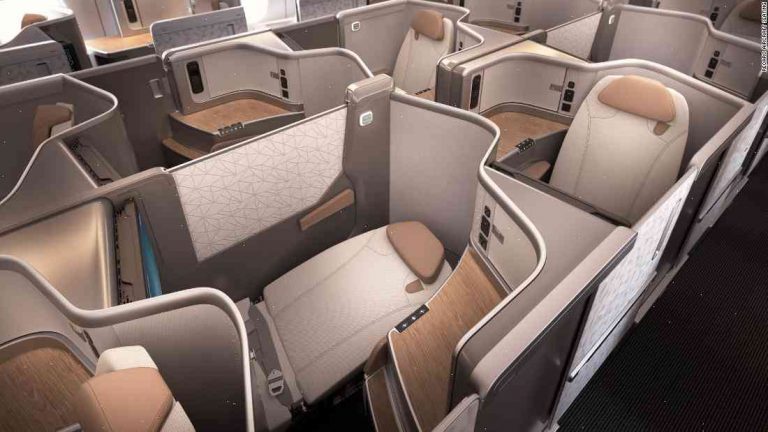Image copyright Getty Images Image caption There are 74 superbusiness airlines operating around the world, according to the International Air Transport Association
Airlines are morphing from ageing cargo carriers to smart, social media-focused micro-couriers, or “superbusiness” airlines, experts say.
The distinctive planes are becoming less of a challenge to the airlines and more of a sign of a competitive edge, they say.
Consumers are receptive to having a superbusiness airline as well as a traditional one, IATA chief economist Brian Pearce said.
The notion of mobile systems was increasingly being used by the industry to tailor products, rather than simply having a full-service provider.
Who flies superbusiness?
Image copyright AFP Image caption Superbusiness airlines fly high on the value of their services
The fact that superbusiness airlines have their own loyalty programmes and customise their own services is testament to their belief that the younger generation are looking for more personalised services and time on the plane.
This, combined with the dynamic nature of the millennial generation, which is often looking for instant gratification, is combining to help fuel the growth of the industry, Mr Pearce says.
“We live in a world where superbusiness airlines are the norm,” he said, adding that “the birth of the business jet means new generations of superbusiness passengers come along every day to their new toys” and also “turn down the credit card”.
The concept of a superbusiness airline continues to evolve, IATA says, with more opportunities for passengers to buy their own seats, such as WiFi and touchscreen service-free seats.
Image copyright AFP Image caption Superbusiness passengers now expect to pay extra for sitting in an executive class cabin
And with companies increasingly shifting towards more personalised and individualised models, it is no longer difficult to combine extra services with early payments to a carrier.
If you pay for the initial ticket, say, before you take off, the airline can come up with added services to suit the complexity of your itinerary that will only be available to you once you arrive.
In the past, having a successful airline meant managing as many assets as possible – flying thousands of routes and becoming as profitable as possible – and there was always that nagging need to provide the same service on as many routes as possible.
Nowadays, the ultra-high-net-worth (UHNW) demographic are increasingly demanding one-off services such as internet access.
This makes airlines such as Mooney, which flies between Hong Kong and New York, and Transavia, a division of Lufthansa’s Germanwings unit, more viable.
Nowadays, they can focus on becoming lean, with most passengers paying a larger part of the cost for premium services, instead of all of it in order to fulfil all of their allocated seats.
Some of these carriers have been able to gain enormous loyalty levels by serving those clients, which are even better value for money.
“It’s like the high street in this new world,” Mr Pearce says. “Brands are really starting to have differentiated offerings.
“When people say ‘Let’s all fly United, it’s the same’, they get disappointed. United can’t offer a better experience, they can’t offer time, but they can offer a social networking experience and that’s driving a competitive response.”
The high social media pressures of the current customer generation means superbusiness airlines are well on their way to embedding themselves within the consumer consciousness.
“There are people who are moving into the superbusiness segment by necessity, or even by choice and now there are other opportunities. Social media is a real factor,” he says.
Could superbusiness airlines one day challenge traditional carriers for passengers?
“As competition keeps coming from new carriers, they are the ones that have to innovate, play on the top of their game and figure out how to go beyond existing market niches,” Mr Pearce said.
“Those are the people who will stand the test of time and continue to gain share.”
